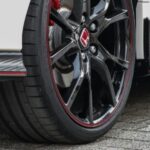Model train enthusiasts prize sound-equipped HO scale cars for the immersive realism they bring to layouts. However, like any intricate system, these sound systems can encounter issues. If your HO sound car is experiencing problems, this guide will walk you through troubleshooting steps to get your trains back on track and sounding great.
Understanding Common HO Sound Car Issues
Before diving into repairs, it’s helpful to understand the common culprits behind sound problems in HO scale cars. These can range from simple fixes to more complex issues requiring detailed attention. Typical problems include:
- No Sound: The most obvious issue – silence where there should be sound. This could stem from power problems, decoder malfunctions, speaker issues, or wiring faults.
- Distorted or Fuzzy Sound: Crackling, hissing, or unclear audio can ruin the realism. This often points to speaker damage, wiring problems, or incorrect decoder settings.
- Intermittent Sound: Sound cutting in and out can be frustrating. This is frequently caused by poor track contact, loose wiring, or decoder glitches.
- Low Volume: If the sound is present but barely audible, the volume setting might be too low, or there could be an issue with the speaker or amplifier.
- Specific Sound Effects Missing or Malfunctioning: Individual sounds like whistles, bells, or engine chuffs might not play correctly, indicating a decoder programming or sound file problem.
Troubleshooting Steps for HO Sound Car Repair
Follow these steps to systematically diagnose and address sound problems in your HO scale cars:
1. Check Track Power and Connections
Sound decoders require consistent and clean power from the track to function correctly.
- Track Cleanliness: Ensure your tracks are clean of dirt, dust, and oxidation. Use a track cleaning pad or solution to remove any buildup. Dirty tracks are a primary cause of intermittent operation, including sound issues.
- Wheel Contact: Check that the wheels of your sound car are clean and making good contact with the track. Clean wheels with a specialized wheel cleaning tool or a soft cloth and isopropyl alcohol.
- Power Supply: If you’re using DCC (Digital Command Control), verify that your DCC system is powered on and functioning correctly. For DC (Direct Current) layouts, ensure your power pack is providing adequate voltage.
- Wiring to Track: If you have any wiring connecting the track sections, inspect these connections to ensure they are secure and not corroded.
2. Examine the Speaker
The speaker is responsible for producing the sound; a problem here will directly affect audio output.
- Visual Inspection: Carefully look at the speaker for any signs of physical damage, such as tears, punctures, or cone deformation.
- Wiring to Speaker: Check the wires connecting the speaker to the decoder. Ensure they are securely attached to both the speaker terminals and the decoder. Look for any breaks or loose connections in the wiring.
- Speaker Obstruction: Make sure nothing is obstructing the speaker, such as loose wires, debris, or the car body itself pressing against the speaker cone.
3. Inspect the Decoder and Wiring
The decoder is the brain of the sound system, and its wiring is crucial for proper operation.
- Decoder Location and Mounting: Ensure the decoder is securely mounted inside the car and not loose or rattling around. A loose decoder can lead to wiring damage or intermittent contact.
- Wiring Connections to Decoder: Carefully examine all wires connected to the decoder. Refer to the decoder’s wiring diagram (usually found in the decoder manual or online) to ensure everything is connected correctly. Look for:
- Loose wires: Gently tug on each wire to check if it’s securely connected to the decoder terminal.
- Broken wires: Inspect the wires for any breaks, cuts, or frayed sections.
- Short circuits: Check for any wires that might be touching each other or metal parts of the car, potentially causing a short circuit.
- LED Functionality (if applicable): Many sound decoders also control lights. If the lights on your sound car are also malfunctioning, it could indicate a more general decoder power or wiring issue.
4. Check Decoder Settings and Programming (DCC)
If you are using a DCC system, decoder settings can affect sound output.
- Volume Settings: Use your DCC system’s throttle or programming track to check the master volume setting of the decoder. It might be set too low.
- Sound Mute: Ensure the sound is not accidentally muted through a function button on your DCC throttle.
- Decoder Reset: As a last resort, you can try resetting the decoder to its factory default settings. Refer to your decoder’s manual for the specific reset procedure. Caution: Resetting the decoder will erase any custom programming and sound configurations.
5. Consider Decoder Upgrade
If you’ve exhausted troubleshooting steps and still have sound problems, or if your existing decoder is old or basic, consider upgrading to a higher-quality sound decoder.
Decoders like the SoundTraxx Tsunami2 TSU-BH2 offer advanced features, superior sound fidelity, and robust performance. These decoders are designed to replace existing boards in many HO models and can significantly enhance the sound experience. Features like Dynamic Digital Exhaust (DDE) react to changes in train speed and load, creating a more realistic soundscape.
Alt text: SoundTraxx Tsunami2 TSU-BH2 DCC decoder for HO scale model trains, highlighting its compact design and easy installation for enhanced sound.
Upgrading to a decoder like the Tsunami2 can not only resolve existing sound issues but also provide access to a wider range of high-quality sound effects, including multiple chuffs, whistles, and bells, enriching your model railroad experience.
6. Seek Professional Help
If you are uncomfortable working with electronics or cannot diagnose the problem yourself, it’s best to seek help from a professional model train repair service or a hobby shop with repair expertise. They have specialized tools and knowledge to diagnose and fix complex sound system issues.
Preventative Maintenance for HO Sound Cars
Regular maintenance can prevent many sound problems from occurring in the first place.
- Keep Tracks and Wheels Clean: Regularly clean your tracks and train wheels to ensure consistent power delivery.
- Handle with Care: When handling your sound cars, be gentle to avoid damaging speakers, wiring, or the decoder.
- Proper Storage: Store your model trains in a clean, dry environment to prevent dust buildup and corrosion.
By following these troubleshooting steps and practicing preventative maintenance, you can keep your HO sound cars running smoothly and sounding their best, bringing years of enjoyment to your model railroad hobby.


